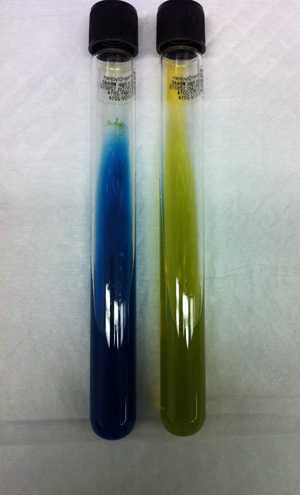Diagnosis and Testing for C. gattii Infection

C. gattii (left-hand tube) on CGB agar
How is a C. gattii infection diagnosed?
Healthcare providers use your medical and travel history, symptoms, physical examinations, and laboratory tests to diagnose a C. gattii infection.
Your healthcare provider will take a sample of tissue or body fluid (such as blood, cerebrospinal fluid, or sputum) and send the sample to a laboratory to be examined under a microscope, tested with an antigen test, or cultured (see Testing for C. gattii infection vs. C. neoformans infection). Your healthcare provider may also perform tests such as a chest x-ray or CT scan of your lungs, brain, or other parts of the body.
Testing for C. gattii infection vs. C. neoformans infection
Testing serum (a component of blood) or cerebrospinal fluid for cryptococcal antigen is useful as a first test for cryptococcal infection, but the test doesn’t tell the difference between Cryptococcus neoformans and Cryptococcus gattii. Culture is traditionally used to tell if a cryptococcal infection is due to C. neoformans or C. gattii. On canavanine-glycine-bromthymol blue (CGB) agar, C. gattii will turn the culture medium blue, but C. neoformans will leave the color of the medium unaffected (yellow to green).
- Page last reviewed: December 16, 2015
- Page last updated: December 16, 2015
- Content source:


 ShareCompartir
ShareCompartir